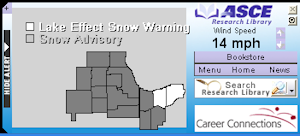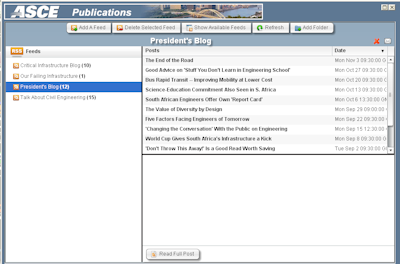Today I read a recently released white paper, Government 2.0: Building Communities with Web 2.0 and Social Networking. Overall, I thought the paper did a good job summarizing much of the ongoing, online discussions and research on this topic. However, I sensed an underlying attitude that concerned me as a government employee. This unspoken, read-between-the-lines belief by the author was finally put to words in the conclusion when he stated: “Ultimately CIOs must decide for themselves if Web 2.0 technology makes sense for their community and if this is the time to invest in it.”
Now, I don’t know about the rest of you working in government, but I can’t begin to tell you how many times our city attorney has lectured me that we are only employed to give advice; it it the job of the elected officials to make the final decisions. I realize we are left to make some decisions on a daily basis without having to run to the mayor or city manager each time, so I take his comment as meaning the “big” decisions. As the city engineer, I can make recommendations about what roads need to be repaired, but in the end, the mayor and the aldermen make the final choice. And I make the repairs based on their decision.
So making the statement that ultimately it will be up to the CIO to decide if his community should embrace Web 2.0 is like saying it is up to our city attorney to decide if he should begin legal proceedings to condemn and demolish someone’s home that doesn’t meet local ordinances. All of us would think that is ridiculous. Those types of community-wide decisions that have the chance to impact our citizens and expend funds must be made by the elected officials. CIOs can recommend and present implementation of Web 2.0, but ultimately, the elected officials will be the ones to accept or deny its use.
The role of the CIO is something I have been thinking about for some time and even more so since meeting Bill Greeves, Director of Information Technology for Roanoke County, Virginia. He and I co-founded the MuniGov 2.0 group to serve as a resource for local government folks looking at Web 2.0 implementation. Not one of the members of this group, who are primarily people working in the information technology or computer fields, have ever expressed an attitude or opinion similar to that put forth by this report. In fact, all have viewed their role in this as a professional who has recognized the need to develop the skills necessary to face the future Web 2.0-related demands of their agency. They all have approached implementation of Web 2.0 as that of a person who will most likely lead the charge, but primarily as a facilitator, collaborator, and mentor to others in their workforce.
Their approach has restored an image I had of that profession that was obviously undeserving but brought about by years of hearing others in government complain about the IT department. The complaints I have heard are that IT prevents them from being able to do their work by restricting access to programs. Talking with Bill about this, I realize that IT has an important responsibility to protect the security of the network, and most likely, these restrictions have been set in place by IT to accomplish that task. But Bill takes a very practical approach to this by indicating that while security is vital, that goal should not keep an IT professional from working with others in the agency to investigate implementing needed software. (See his article on this – published by the same entity that published the report above – addressing this topic from an IT professional’s perspective: Can’t We All Just Get Along?)
As we move into the future and acceptance of Web 2.0, I do believe that IT professionals will be moved out of the basement (as so humorously depicted in the British television show, the IT Crowd) and take a well-deserved place on the upper floors. And I believe that instead of complaining about how IT keeps everyone from being able to do what they want to do, people need to realize how much IT does to make sure they can keep working. We need to “friend an IT person,” find out what their job really entails, and realize that as computers increase in importance, it will be these folks who most likely will be leading the charge. But the charge will not be successful if they do not obtain the trust and buy-in from other departments (and comments like those in this report do not facilitate that type of cooperation with people who already look upon the IT department with distrust and consternation). And no one will be charging at all without the green light from elected officials.




